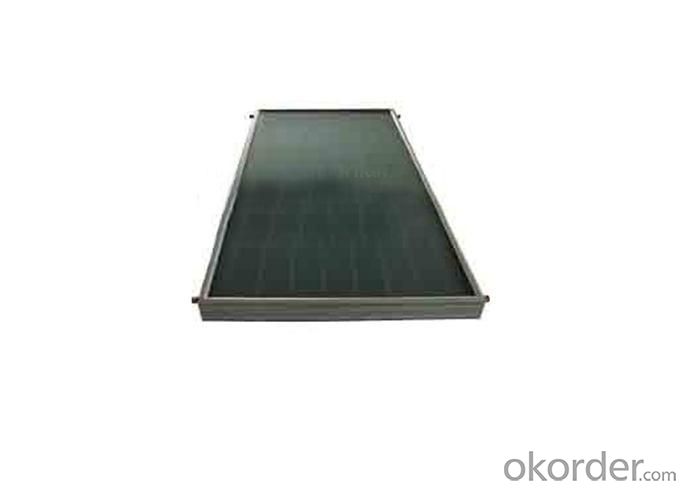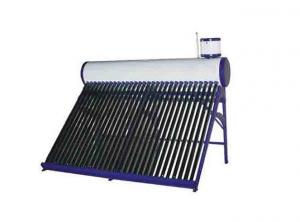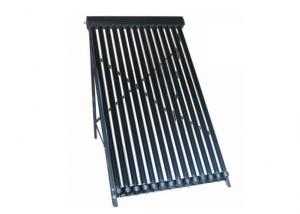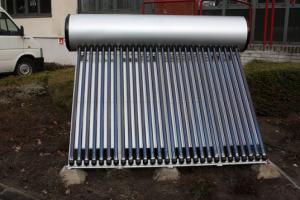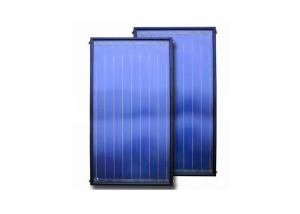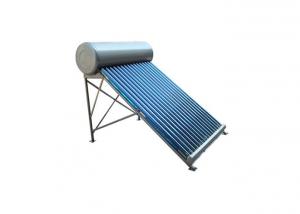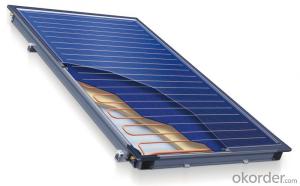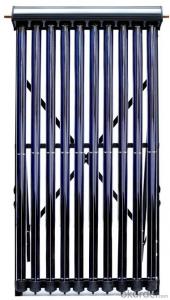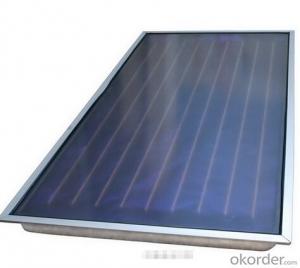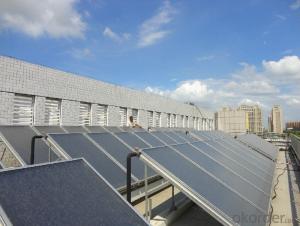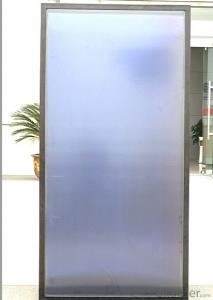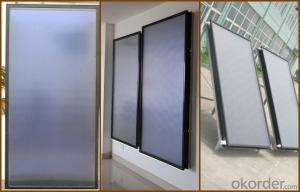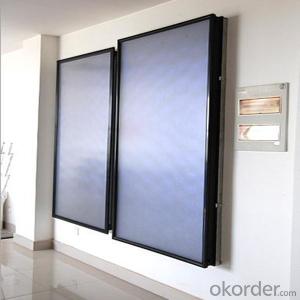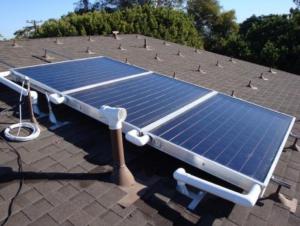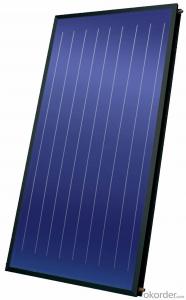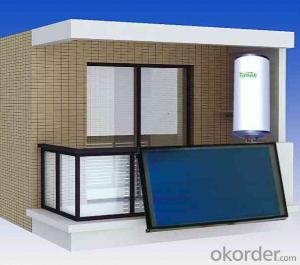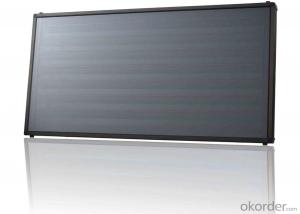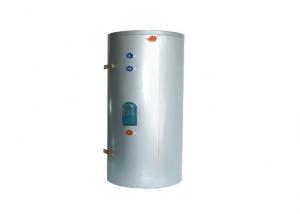High Quality Flat Plate Hydronic Solar Collectors
- Loading Port:
- China Main Port
- Payment Terms:
- TT or LC
- Min Order Qty:
- 1 Piece pc
- Supply Capability:
- 5000 Pieces per Month pc/month
OKorder Service Pledge
OKorder Financial Service
You Might Also Like
flat plate solar collector:
1)high quality
2)the most competitive price
3)best service
Specification of flat plate solar collector:
1)Dimension:2000%*1060*70
2)Gross area: 2 m2
3)Absorb area:1.8 m2
4)Conversion factor:78.5η%
5)Fluit content:2.2L
6)Maxmium operating pressure:1MPA
7)Temperature of operation:35-150 oC
8)Net weighte:32 KG/ PCS
9)Core: all cooper, ultrasonic welding
10)Coating: highly selective titanium coating from Germany
11)Abosorbe material:cooper
12)Header pipe ,material: copper
13)Materila of glass: tempered glass
14)Dimension of glass sheet:1988mm*988mm
15)Material of frame: aluminum alloy
16)Color of frame: champagne/brone-colored/white
17)Insulation : material, high pressure, high density polyrethane foam
18) Thickness of insulation :30mm/40mm/50mm
19)Material and thickness of black sheet:embossed aluminum blacksheet o.3mm
20)Cover sealing material:EPDM+ metal
- Q: How do solar collectors contribute to reducing water consumption?
- Water consumption can be reduced through the use of solar collectors, which offer an alternative and more sustainable approach to heating water. Unlike traditional methods that rely on fossil fuels or electricity, solar collectors use the sun's energy, eliminating the need for water-intensive procedures like extraction, processing, and generation. The functioning of solar collectors involves absorbing sunlight, converting it into heat, and then transferring that heat to the water in the system. This process doesn't require any additional water, making it a water-efficient choice for water heating. By employing solar collectors, water consumption is minimized as there is no need for water in electricity generation or fossil fuel extraction and processing. Furthermore, solar collectors can contribute to reduced water consumption through the use of a closed-loop system. In this system, the water in the collector circulates through pipes, getting heated by the sun, and then returning to a storage tank. This allows for the reuse of the same water, further reducing the necessity for fresh water. Additionally, the closed-loop system helps minimize the risk of contamination since the water remains contained within the system and is not exposed to external pollutants. In conclusion, solar collectors play a vital role in reducing water consumption by offering an environmentally friendly and sustainable approach to heating water. By relying on the sun's energy, they eliminate the water-intensive processes associated with traditional water heating systems, ultimately aiding in the conservation of water resources.
- Q: Can solar collectors be used in areas with limited transportation infrastructure?
- Yes, solar collectors can be used in areas with limited transportation infrastructure. Solar collectors are typically installed on rooftops or open spaces, and once installed, they require minimal maintenance and do not rely on transportation infrastructure for their operation. This makes solar collectors a viable option for generating electricity in remote areas or regions with limited transportation access. Additionally, solar power can be stored in batteries, allowing for a continuous energy supply even in areas with limited transportation infrastructure.
- Q: Can solar collectors be used for heating car washes?
- Yes, solar collectors can be used for heating car washes. Solar thermal collectors can absorb sunlight and convert it into thermal energy, which can then be used to heat water for car washes. This renewable energy source can help reduce the reliance on traditional heating methods and lower operating costs while promoting sustainability.
- Q: How do solar collectors affect the carbon footprint of a building?
- Solar collectors can significantly reduce the carbon footprint of a building by harnessing renewable energy from the sun. By generating clean and sustainable electricity, solar collectors eliminate the need for fossil fuel-based power sources, which are major contributors to greenhouse gas emissions. Thus, the integration of solar collectors helps to decrease the carbon emissions associated with a building's energy consumption, making it more environmentally friendly and reducing its overall carbon footprint.
- Q: What is the role of a heat transfer fluid in a solar collector system?
- The role of a heat transfer fluid in a solar collector system is to absorb heat energy from the sun and transfer it to the desired location for use or storage. It circulates through the solar collector, absorbing heat from the sun's radiation, and then carries this thermal energy to a heat exchanger or storage tank. The heat transfer fluid must have high thermal conductivity, low freezing point, and good stability to effectively capture and transfer the solar energy.
- Q: Can solar collectors be used in regions with extreme temperatures?
- Yes, solar collectors can be used in regions with extreme temperatures. However, extreme cold temperatures can reduce their efficiency, while extreme heat can affect their performance and lifespan. Therefore, it is essential to properly design and insulate solar collector systems to ensure their effectiveness in extreme temperature conditions.
- Q: Can solar collectors be used in areas with limited technical support?
- Yes, solar collectors can be used in areas with limited technical support. Solar collectors are relatively simple devices that do not require complex maintenance or technical expertise. With proper training and basic knowledge, local communities can operate and maintain solar collectors effectively. Additionally, advancements in solar technology have made these systems more user-friendly and robust, allowing them to be utilized in remote areas with limited technical assistance.
- Q: Are there any limitations to using solar collectors?
- Yes, there are limitations to using solar collectors. Some of the limitations include the intermittent nature of solar energy, as it relies on sunlight availability, which can vary depending on weather conditions and time of day. Additionally, solar collectors require a large surface area to capture sufficient sunlight, making them impractical for certain urban or space-constrained areas. The upfront cost of installing solar collectors can also be a limitation, although it is often offset by long-term savings on energy bills. Lastly, energy storage is a challenge as solar energy cannot be generated during the night, necessitating the use of batteries or grid connection for continuous power supply.
- Q: What is the impact of dust and dirt on solar collector efficiency?
- Dust and dirt have a significant impact on the efficiency of solar collectors. When dust and dirt accumulate on the surface of the collectors, they block the sunlight from reaching the photovoltaic cells or the heat-absorbing surfaces. This reduces the overall efficiency of the solar collector system as less sunlight is absorbed or converted into electricity. Regular cleaning and maintenance of the collectors are essential to ensure their optimal performance and maximize energy production.
- Q: What is the cost of installing a solar collector?
- The cost of installing a solar collector can vary depending on several factors such as the size and type of collector, the complexity of the installation, and the specific location. Generally, the cost can range from a few thousand dollars to tens of thousands of dollars. It is recommended to consult with a professional solar installer to get an accurate estimate based on your specific needs and circumstances.
1. Manufacturer Overview
| Location | Zhejiang,China |
| Year Established | 2005 |
| Annual Output Value | US$2.5 Million - US$5 Million |
| Main Markets | North America South America Eastern Europe Southeast Asia Africa Oceania Mid East Eastern Asia Western Europe Central America Northern Europe Southern Europe Domestic Market |
| Company Certifications | ISO9001:2008;ISO14001:2004 |
2. Manufacturer Certificates
| a) Certification Name | |
| Range | |
| Reference | |
| Validity Period |
3. Manufacturer Capability
| a) Trade Capacity | |
| Nearest Port | Shanghai,Hangzhou |
| Export Percentage | 41% - 50% |
| No.of Employees in Trade Department | 6-10 People |
| Language Spoken: | English, Chinese |
| b) Factory Information | |
| Factory Size: | 5,000-10,000 square meters |
| No. of Production Lines | 5 |
| Contract Manufacturing | OEM Service Offered Design Service Offered Buyer Label Offered |
| Product Price Range | Average |
Send your message to us
High Quality Flat Plate Hydronic Solar Collectors
- Loading Port:
- China Main Port
- Payment Terms:
- TT or LC
- Min Order Qty:
- 1 Piece pc
- Supply Capability:
- 5000 Pieces per Month pc/month
OKorder Service Pledge
OKorder Financial Service
Similar products
Hot products
Hot Searches
Related keywords

